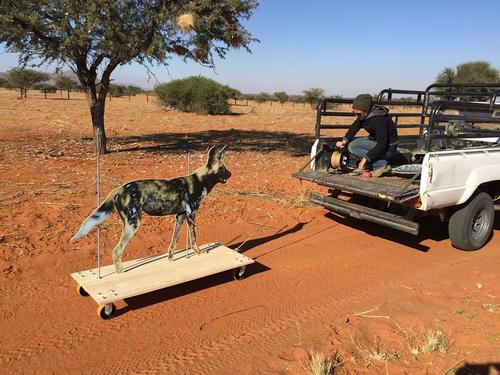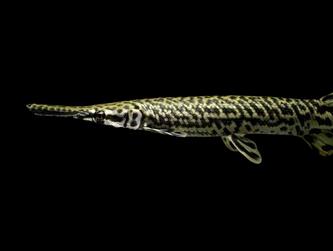
Prey animals perform a diverse variety of behaviors to escape from predators, but whether specific behaviors are used to escape from predators that represent different types of threat has been long-debated. New research from the University of Minnesota College of Biological Sciences shows that predators’ hunting techniques and the relative degree of danger they pose are key factors dictating anti-predator response.
The research, published recently in PLOS ONE, examined how the anti-predator behavior of three common African herbivore species is shaped by predator traits. To do this, researchers conducted hundreds of “encounters” between wild herbivores and life-sized models of large predators that differ in these key functional traits. This experimental approach enabled researchers to tease apart the contributing factors of predator species identity, hunting technique (ambush or pursuit), and the relative risk each species posed to the focal prey animals (based on relative density, prey preference, and capture success rates) to overall anti-predator response. Findings from this study can be used to build a framework for predicting the type and intensity of prey response to predators.
Overall, this study found:
- that the choice and intensity of anti-predator behaviors were both shaped by hunting style and relative risk factors;
- all prey species were far more vigilant in the presence of predators that had high capture success rates; and
- that the decisions of whether and how strongly to flee, alarm call, or monitor predators were strongly correlated with predator hunting strategy and the relative level of risk they represent.
“This work represents an enormous step forward in how we are able to systematically relate behavioral tactics within and across prey species to predator traits,” said lead author Meredith Palmer, who led this study as a PhD student at the University of Minnesota. “Our experimental work on free-ranging prey in natural communities suggests that these behaviors may have specific adaptive functions that help prey species escape under different scenarios.”
For researchers, understanding how predators shape prey behavior — which in turn can have cascading impacts on broader ecological processes — is important as large carnivores are pushed toward extinction around the globe by human activity and persecution.
“Not only was Meredith able to address important questions in predator-prey relations, but her experiments were harmless to her study subjects and her voyage of discovery was actually quite a lot of fun as well as enlightening. It was utterly fascinating to see a herd of wildebeest or zebra respond to a cardboard cut-out as if a real lion suddenly appeared in their midst,” said study co-author Craig Packer, director of The Lion Center at the U of M’s College of Biological Sciences.
The National Science Foundation, the James W. Wilkie Fund for Natural History Fellowship, the University of Minnesota Thesis Research Grant, the Alexander & Lydia Anderson Grant, and the University of Minnesota Ecology, Evolution, and Behavior Department Research and Travel awards supported this research.
- Categories:
- Agriculture and Environment
- Animals





